For lightweight and ultralightweight backpackers, the combined weight of food and water will regularly exceed that of all the gear they are carrying. For example, five days food equates to approximately 10 lbs (4.5 kg). Half a gallon of water is roughly 4 lbs (1.8 kg). That’s 14 lbs (6.35 kg) total for a pretty standard haul. It adds up very quickly.
Therefore, when it comes to food and water weight, the overriding question backpackers need to ask themselves before heading out into the wilderness is as follows:
“How can I lighten the amount of food and water I am carrying, without compromising my health and safety?”
Food
When it comes to food, hikers can be a demanding bunch. We want food that’s tasty, nutritious and filling, but we want those requirements to be met in the most compact, lightweight and easy to prepare package possible.
For a comprehensive overview of backpacking foods, click on the following link, Pack Light, Eat Right, which contains a very informative series of articles written by Ph.D. Nutritionist and long distance hiker Dr. Brenda Braaten.
From a purely weight saving perspective, consider the following observations:
1. High Calorie Density Foods
High caloric foods have a greater energy-to-weight ratio. More bang for your caloric buck. Examples include trail mix, peanut butter, granola, corn chips, cheese and certain energy bars (e.g. some of my favourites are ProBar, Larabar, Kind Bar and MealPack). Regularly snacking (i.e. every one to two hours) on such items, which are high in both carbohydrates and fats, enables the hiker to better maintain consistent energy levels by minimizing the depletion of the body’s glycogen stores.

600th (not a typo) and final Mealpack bar of the 12 Long Walks | Appalachian Trail, 2012
2. Minimize Moisture Content
Freeze dried and dehydrated foods are light, convenient and compact. Moisture is removed without sacrificing caloric value. In theory they sound great, however, not all dried foods are created equal. Many freeze-dried products are highly processed and pretty much devoid of nutrition. In addition, they are often over-packaged and overpriced.
That being said, in recent years the nutritional side of things seems to have improved with more additive-free options becoming available. Always read the ingredients list before purchasing and if you choose to carry a lot of these items, consider repackaging them before your hike to save on weight and space. Note that the healthiest, tastiest and cheapest option on the dried food front is to do it yourself. The catch? It can be very time consuming.
3. Less Cooking = Less Weight
By limiting yourself to one cooked meal per day, you decrease the amount of fuel you will need to carry. In warmer temperatures, you may even consider going without cooking altogether. In this case you will save even more weight by eliminating the need for a stove and cooking pot.
Examples of “no cook” meals include dehydrated beans (e.g. long-time favourites include Fantastic Foods, Taste Adventure and Santa Fe Bean Company), hummus and potatoes. When mixed together with olive oil and corn chips they combine to make a tasty, relatively lightweight lunch or dinner.
4. Repackaging
Save weight by repackaging as much as possible before setting out. Excess packaging equates to superfluous weight and less available volume in your pack for more essential items.
5. Carry a Day’s Less Food
I try to start my multi-day backpacking trips after finishing a big breakfast or lunch. That way I’m set on the calorie front for a good part of the first day.
If I’m fairly certain of how long it will take me to get from A to B, I’ll usually only pack the bare minimum of food for the last day as well, taking comfort in the knowledge that a potentially big meal awaits at hike’s end. It’s actually a good motivating technique.
Note: An exception to the second part of this point, is if I’m heading out for an extended trip in areas prone to extreme weather conditions, in which case the time needed to complete the hike may vary according to the whims of Mother Nature.
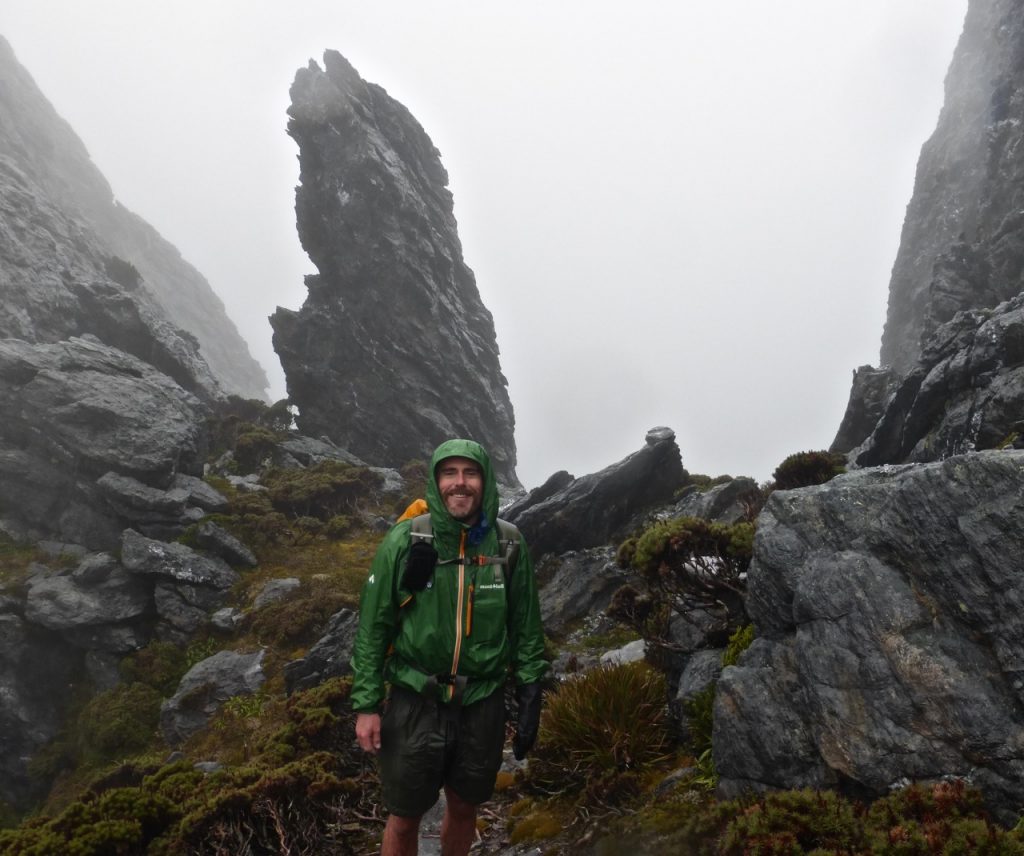
Traversing the Arthur Range in less than stellar conditions. Thank you, Roaring Forties. | Southwest Tasmania, 2015.
6. Silver Lining
When heading out into the woods laden with seven days plus worth of food, your pack is going to be heavy no matter how low your base weight may be. Take solace in the fact that with each passing day, as food is consumed and fuel is burned, your load will become progressively lighter. Tip: Eat the heaviest, most moisture-laden items (e.g. fruit & vegetables) during the first couple of days of your walk.
Water
“How can I minimize the amount of water I am carrying without running the risk of becoming dehydrated?” Consider the following six points.
1. Do your Homework
Before setting out on a hike, always be cognizant of where your water will be coming from. Knowing the location, current status and quality of your H2O sources allows you to plan in advance, thereby minimizing the need to carry large quantities of extra water for insurance purposes.
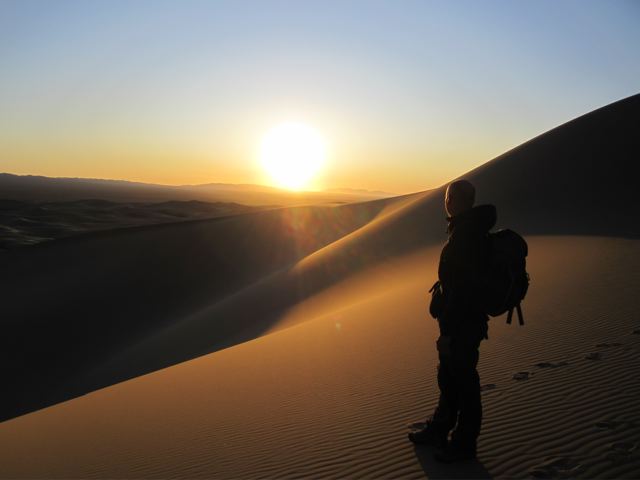
Mongolia’s Gobi Desert | Not a place to be skimping on water.
2. Morning Investment
Before breaking camp, make a habit of drinking at least a half a litre of water. Think of it as a “hydration” investment for the rest of the day. The more you drink early, the less you will need to drink (and carry) later on.
3. ‘Camel Up’
If you are hiking in terrain where opportunities to fill your bottles are few and far between, drink at least one litre of water before leaving each source. By doing so you will not need to carry as much to the next refill point, which in turn translates to less weight on your back and more spring in your step.
4. Cooking
In arid environments, plan to eat your main meals at water sources, thus negating the need to carry extra water for cooking purposes.
5. Timing
In hot, largely shadeless conditions where water sources are scarce, consider doing the bulk of your hiking whilst temperatures are cooler (i.e. early morning, late afternoon and early evening). By following such a strategy, it is possible to make do with less water because you are resting rather than exerting during the hottest part of the day.
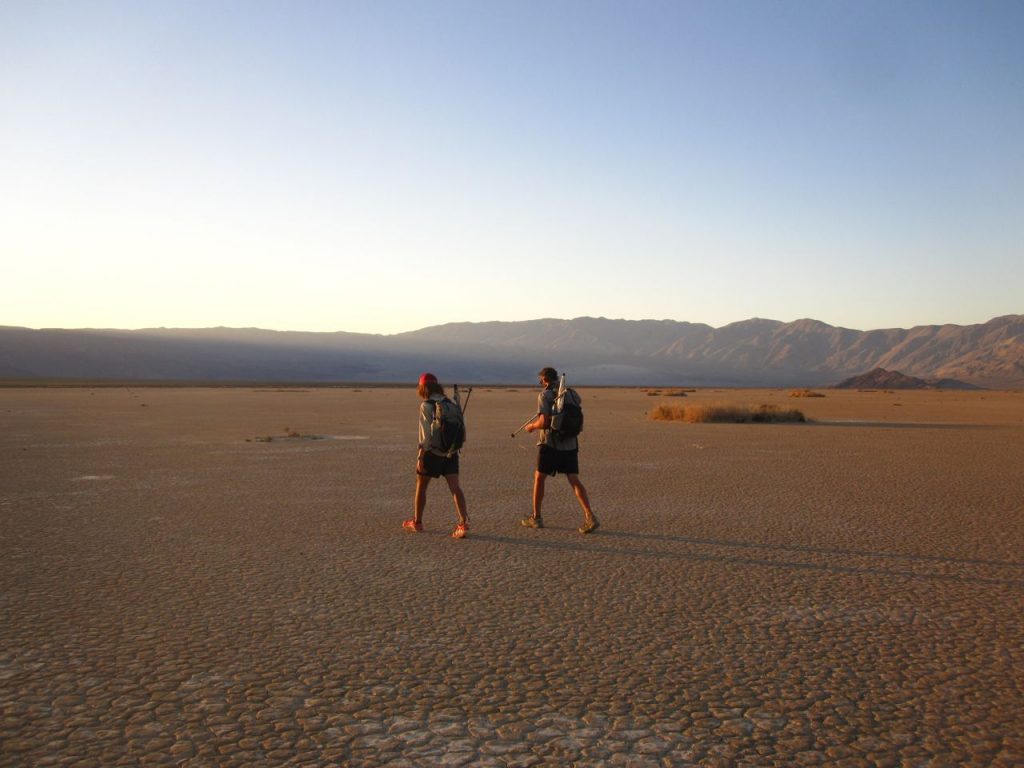
Hiking at dusk in Death Valley National Park | Lowest to Highest Route, 2014.
6. Experience
Once experience has taught you how much water you need in different types of terrain and conditions, it doesn’t make sense to carry a great deal extra for security purposes.
Aim at carrying enough water to enable you to arrive at the next source well hydrated, but not so much that you get there with a couple of litres still to drink. This equates to wasted energy. Obviously, an exception to this point is if you find yourself walking in an environment where you are not certain of the quality and/or regularity of water sources. In such situations, it is always wise to err on the side of caution.
For a detailed overview of all things H2O in the backcountry, see Hydration in the HEALTH & SAFETY section of the website.
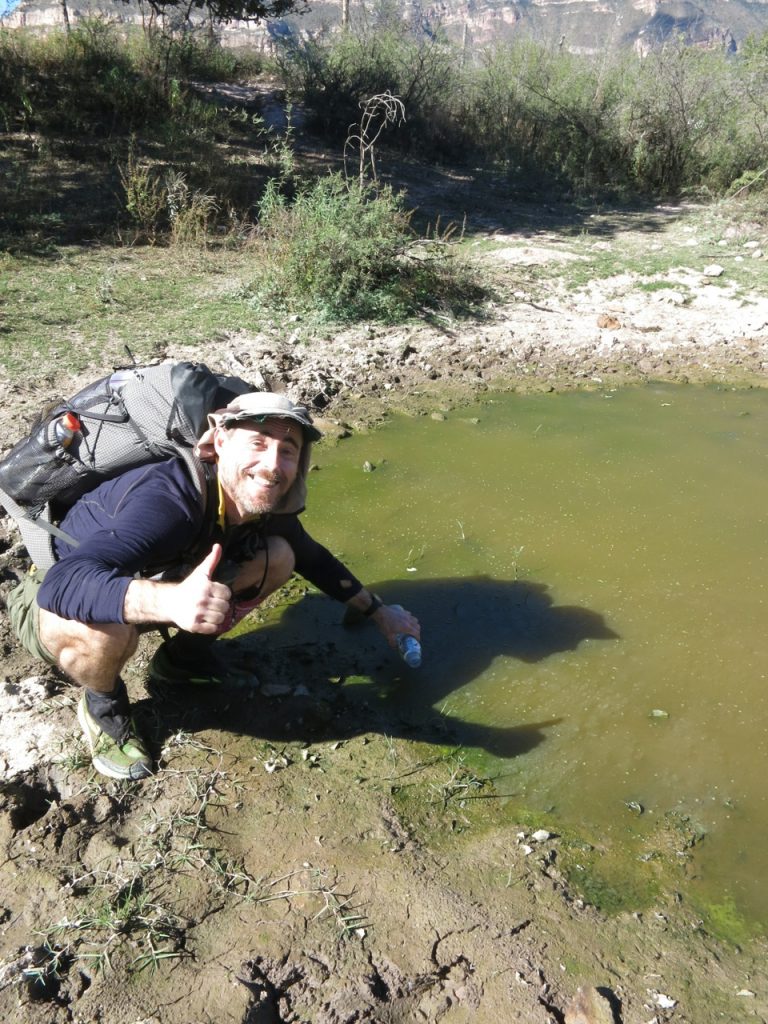
Hoping for the best | Copper Canyon Traverse, Mexico, 2013.
Discover more from The Hiking Life
Subscribe to get the latest posts to your email.
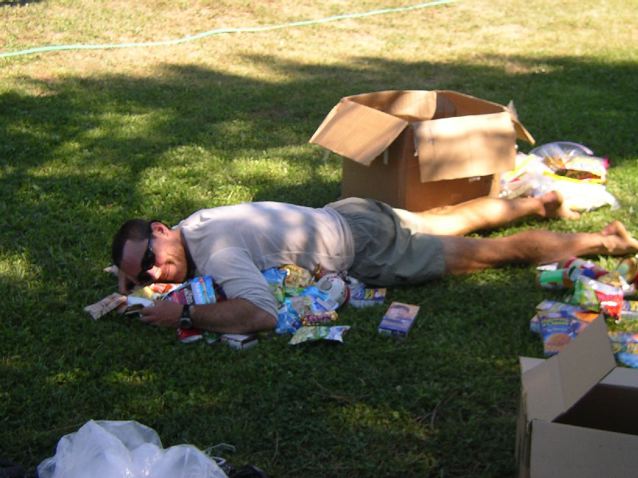
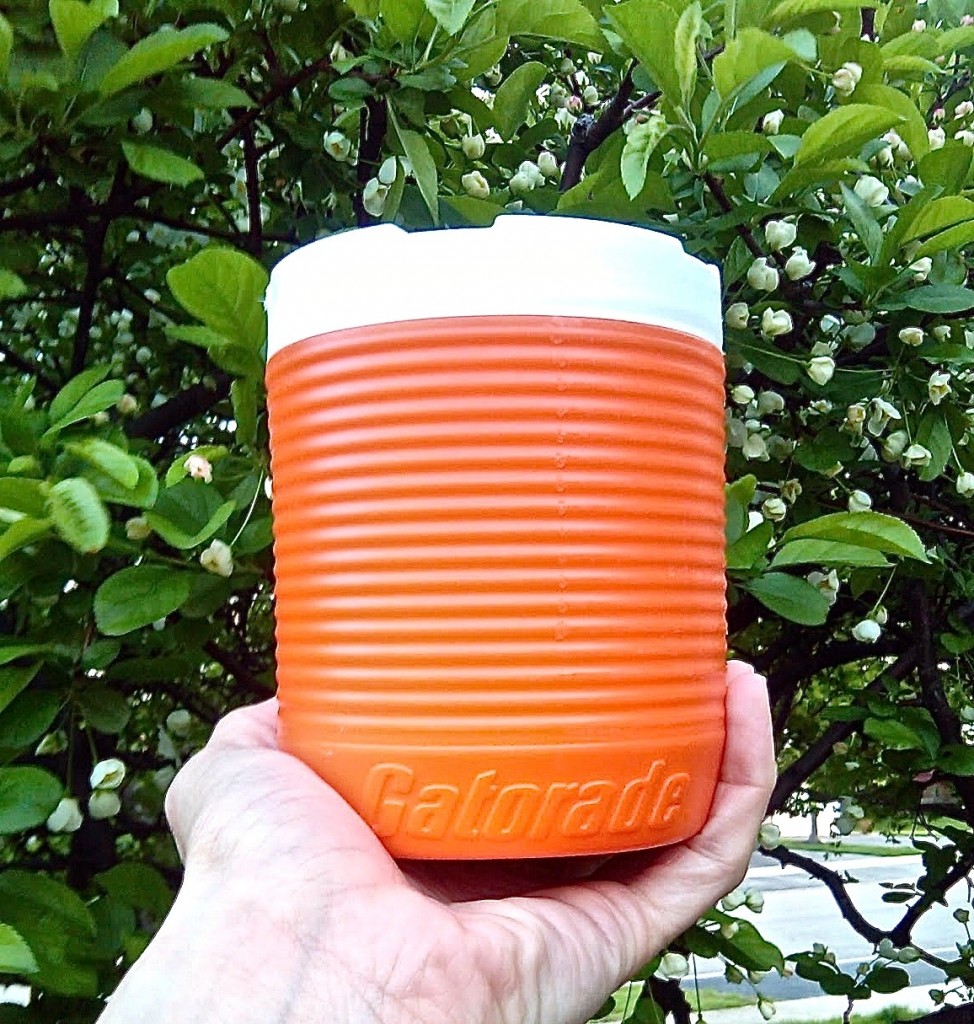
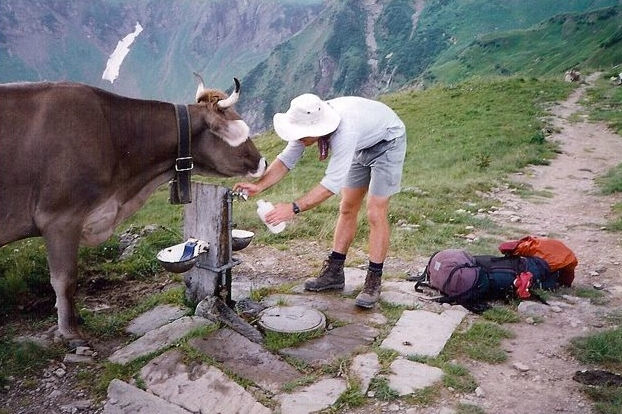
Good read, thank you for sharing your experience
Thanks for that .. good advice.
On longer trips, I usually pack some gatorade powder. Particularly when hiking in warmer environments.
Electrolytes will be lighter by themselves apart from a commercial drink mix (a pinch of salt, magnesium, etc.). The commercial sports drinks have unnecessary sugar and/or other sweetners. But while the electrolytes will benefit you on your hike you won’t need less water that way. You’ll just be better off for the electrolytes.
One can also:
1) resupply more frequently. This may entail tweaking logistics and tactics, a skill building exercise.
2) take advantage of supplementing/supplementing more through sustainable responsible foraging and utilizing existing sources such as CG Stores, near the trail/route delis, etc. This may entail doing some skill building such as learning about regional edible plants. Skills and UL philosophy are two peas in a pod.
3) requiring less food caloric energy by:
a. not thinking of it as eternally universally unlimited always available. this means some rampant consumer food wasteful wealthiest society folks(the US population) accustomed to such off trail conditions not bring such an expectation to the trail. OMG can the trail change cultural habits!
b. thinking of energy as resource that is part of the consumables category because that’s what it is
c. this may mean varying pace at times according to conditions or hiking at night to consume less water, as two examples, similar to early and late in the day recommendations.
d. maintaining some higher level of health than the SAD(Standar Americam Diet) consuming U.S. norm including digestive/microbiome gut health so the fuller nutritional density of food can be utilized.
e. aim not just for high cal/oz ratios but overall nutritionally dense foods
f. not starting a hike by being chronically dehydrated as 70%-75% of the U.S. pop is said to be in studies